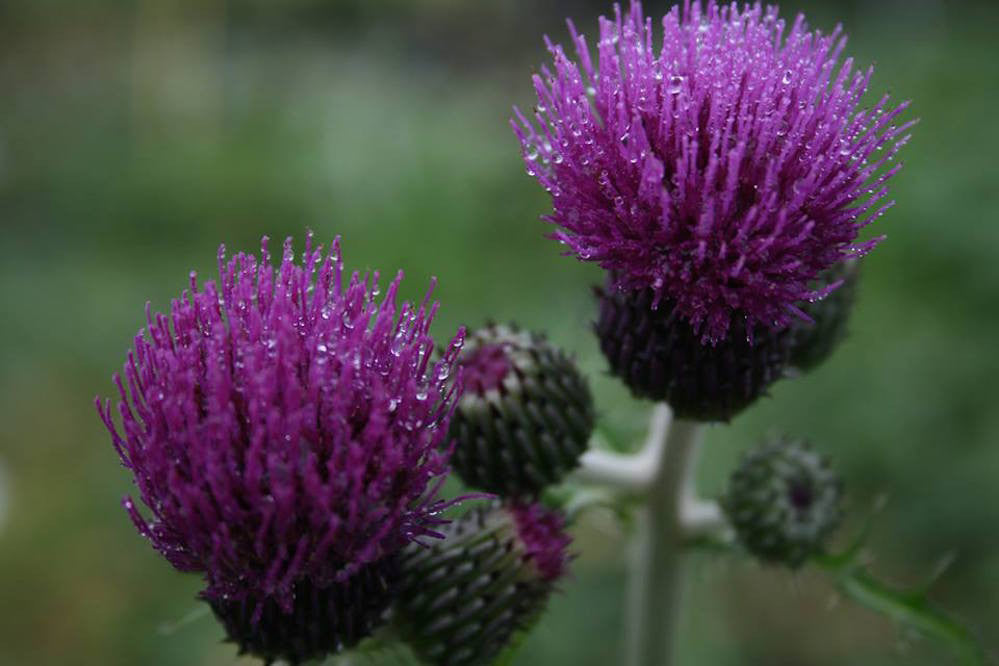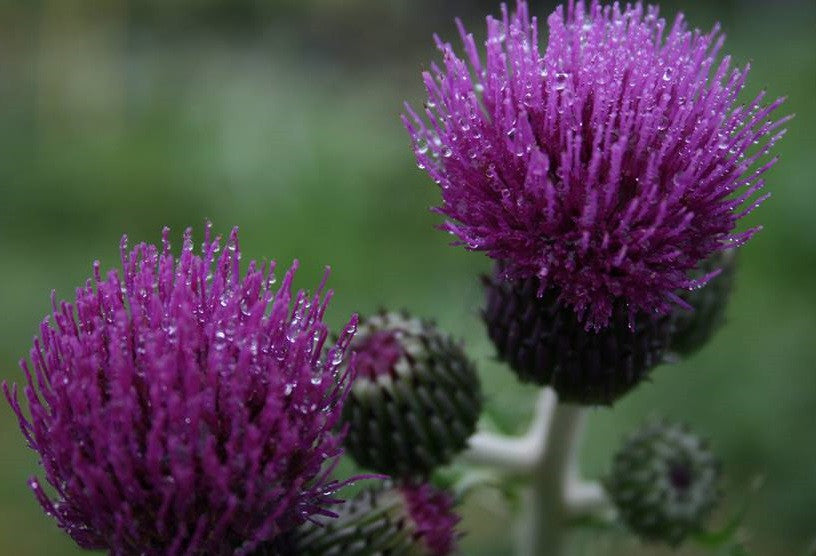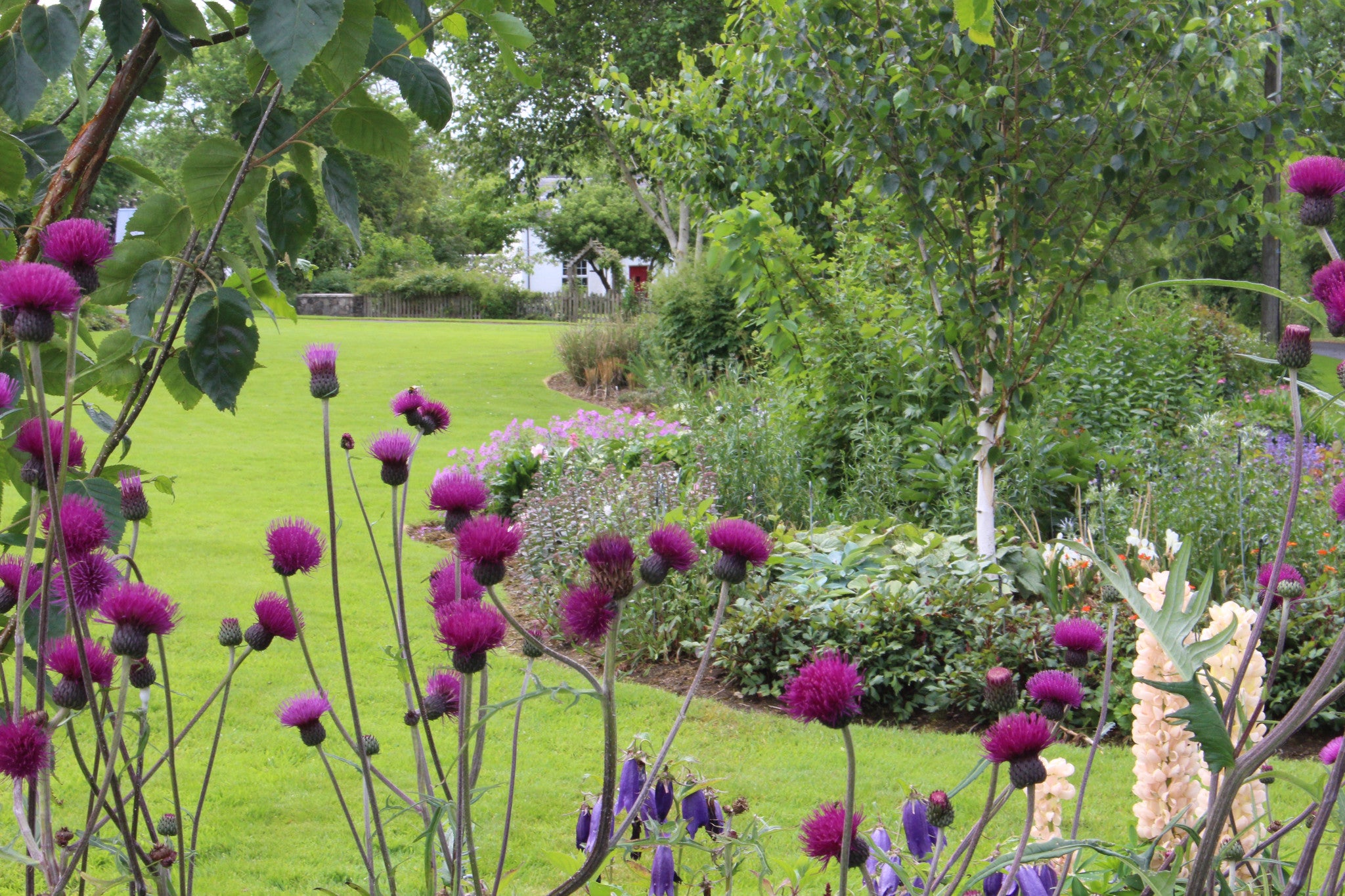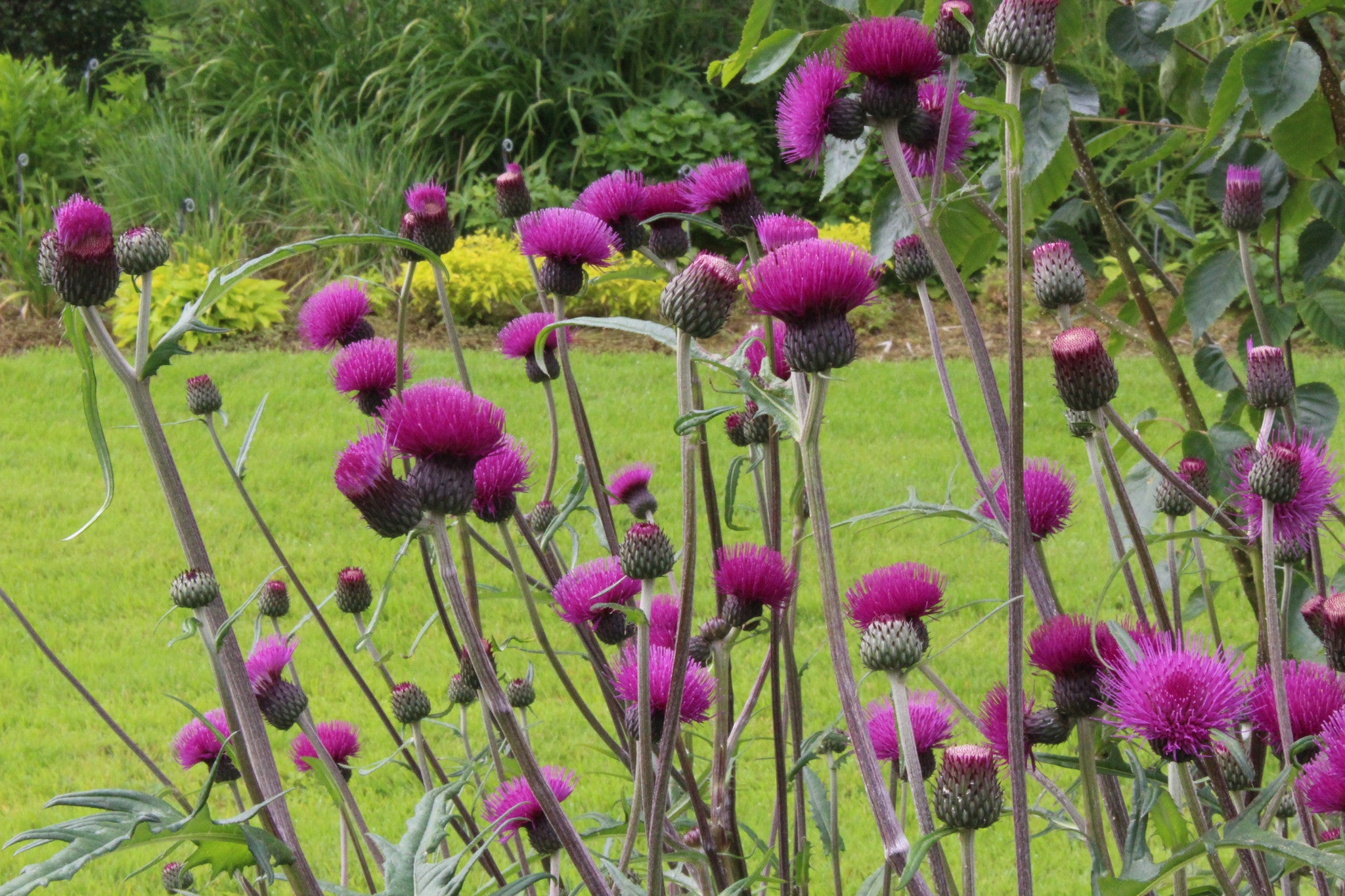Cirsium rivulare 'Trevor's Blue Wonder'
Approx. 0.5 litre pot
About this cultivar:
Cirsium rivulare 'Trevor's Blue Wonder' is for all intents and purposes the same as Cirsium rivulare 'Atropurpureum' except it is bluer.
- Position: Full sun, partial shade
- Soil: Almost any soil, grows well in Ballyrobert
- Flowers: July, August
- Other features: Grows well in Ballyrobert, Bees and Butterflies
- Hardiness: Fully hardy - grows well in Ballyrobert!
- Habit: Clump forming, Columnar or Upright
- Foliage: Deciduous
- Height: 90 - 150 cm (3 - 5 ft)
- Spread: 45 - 75 cm (1.5 - 2.5 ft)
- Time to full growth: 2 to 5 years
- Plant type: Herbaceous Perennial
- Colour: Red, pink, purple, green
-
Goes well with: Papaver, Aster, Astrantia and Salvia. Luzula nivea or Pennisetum
About this genus:
Cirsium is a genus of perennial and biennial flowering plants in the daisy family (Asteraceae). It is one of several genera known commonly as thistles. They are more accurately known as Plume thistles, known for their effusive flower heads, usually purple, rose or pink, also yellow or white. They have erect stems and prickly leaves. They can spread by seed, and also by rhizomes below the surface
The word 'Cirsium' derives from the Greek word kirsos meaning 'swollen vein'. Thistles were used as a remedy against swollen veins. Their flowers often bloom April to August and are often covered in bees - this looks great when the tall stems sway back and forth.
They normally prefer damp ground, as you would expect, and they grow in a variety of soils that are not too dry. They prefer full sun - which really means open locations (part shade is ok, full shade not).
Most ornamental thistles are grow for the flower heads on top of their tall stems; the foliage can get quite tatty. This often means you need to grow it behind or through plants with better foliage. However in our garden at Ballyrobert they thrive and the foilage is always green and healthy thus we are happy to let them grow by themselves.
The thistle is particularly effective alongside Papaver (although oriental poppies need good moisture). A low-spreading aster might not be a bad idea either. Also try Astrantia and Salvia. If you get the lighting right grasses and be a good companion- try Luzula nivea or Pennisetum












